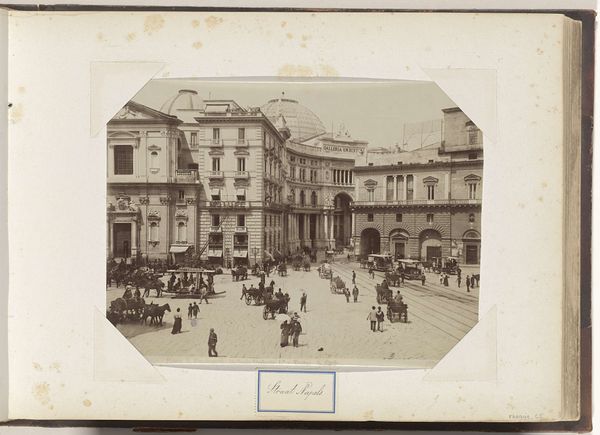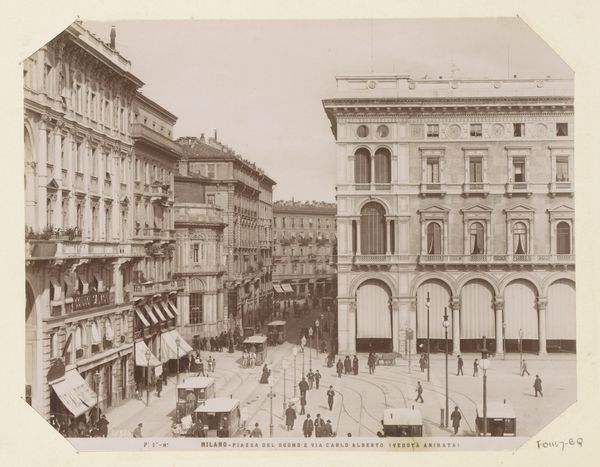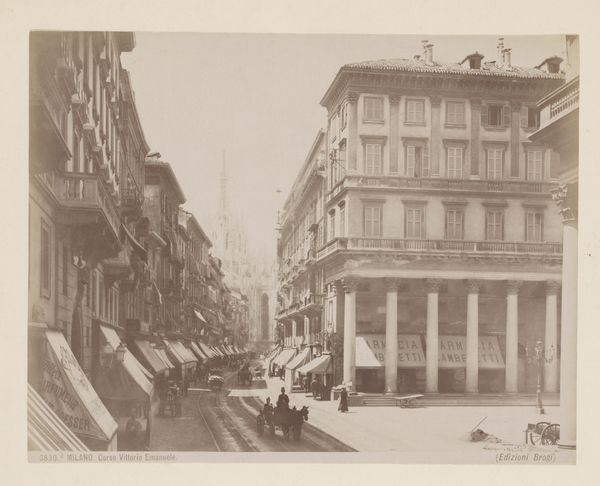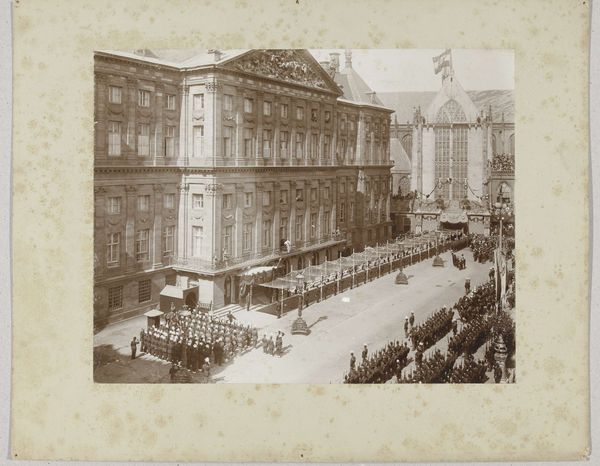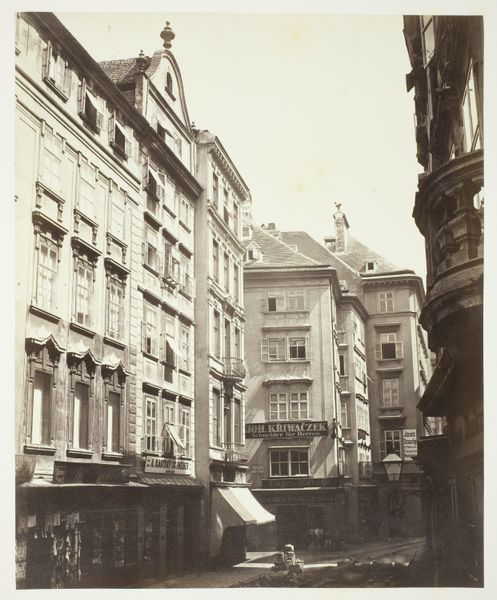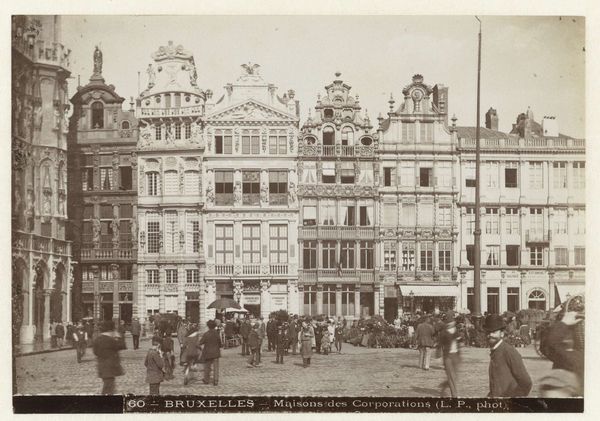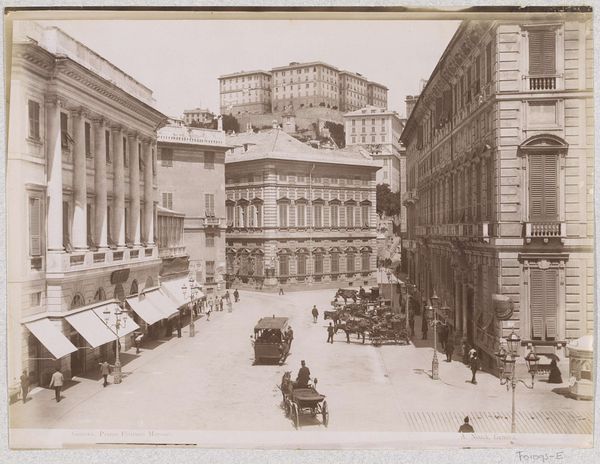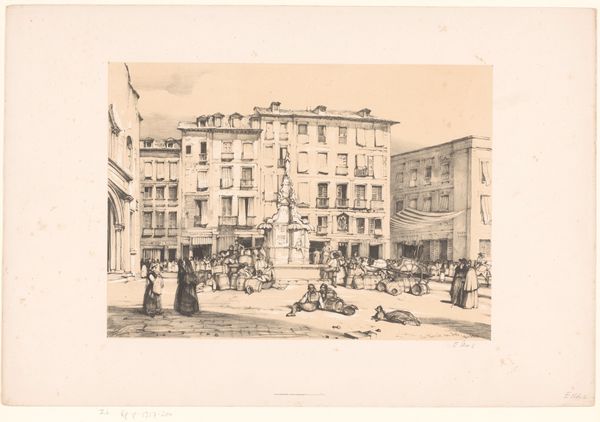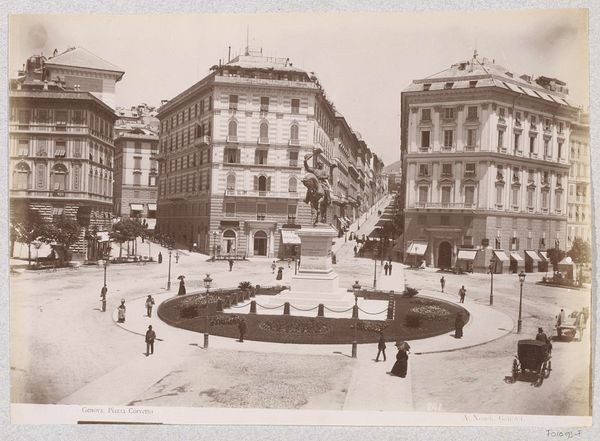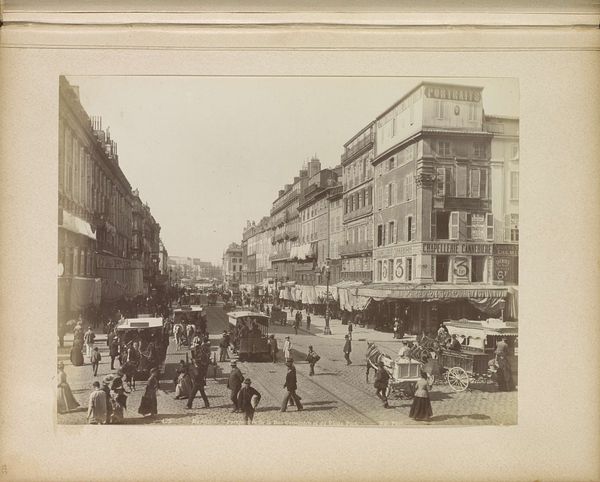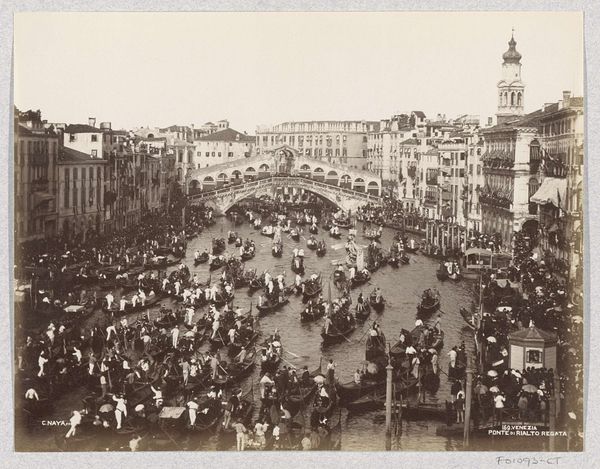
print, photography, gelatin-silver-print
#
medieval
# print
#
landscape
#
photography
#
gelatin-silver-print
#
cityscape
#
italian-renaissance
#
realism
Dimensions: height 204 mm, width 251 mm, height 242 mm, width 327 mm
Copyright: Rijks Museum: Open Domain
Editor: This is a gelatin-silver print from 1898 by Fratelli Alinari, depicting the Chiesa di San Pietro in Banchi, in Genoa. It's fascinating how the church is situated right in the heart of the bustling city, yet maintains its architectural grandeur. How do you interpret this work, considering its historical context? Curator: It's interesting to see this photograph as more than just a document of a specific location. Alinari, by capturing this scene, participates in the wider visual culture that shaped perceptions of Italian identity in the late 19th century. What do you notice about the people in the photograph and their relationship to the architecture? Editor: There's a large crowd in the square, seemingly going about their daily lives. It's a very dynamic composition, contrasting the static architecture with the movement of the people. The Church is undeniably prominent, even if enveloped by these mundane daily happenings. Curator: Precisely. These urban scenes became symbols of national pride but also showcased the rapid transformations Italy was undergoing. Consider how the rise of photography impacted the representation of cities and their monuments. Before its advent, paintings, engravings, or even oral storytelling determined representation, and that narrative was reserved to only a privileged elite. What's interesting here is how a space for commercial transactions – there are shops at ground level here – became associated with civic identity through photographic images, isn't it? Editor: It's true. The accessibility of photography democratized image-making and opened it up to new social dynamics. I hadn't really considered that photography has shaped our sense of collective identity. Curator: And the image circulated widely, influencing understandings of Italy. The everyday now has potential for memorialization, shifting the balance from historic and aristocratic narratives toward one accessible to a greater number of people. That makes it a really valuable contribution in the social history of image-making!
Comments
No comments
Be the first to comment and join the conversation on the ultimate creative platform.
